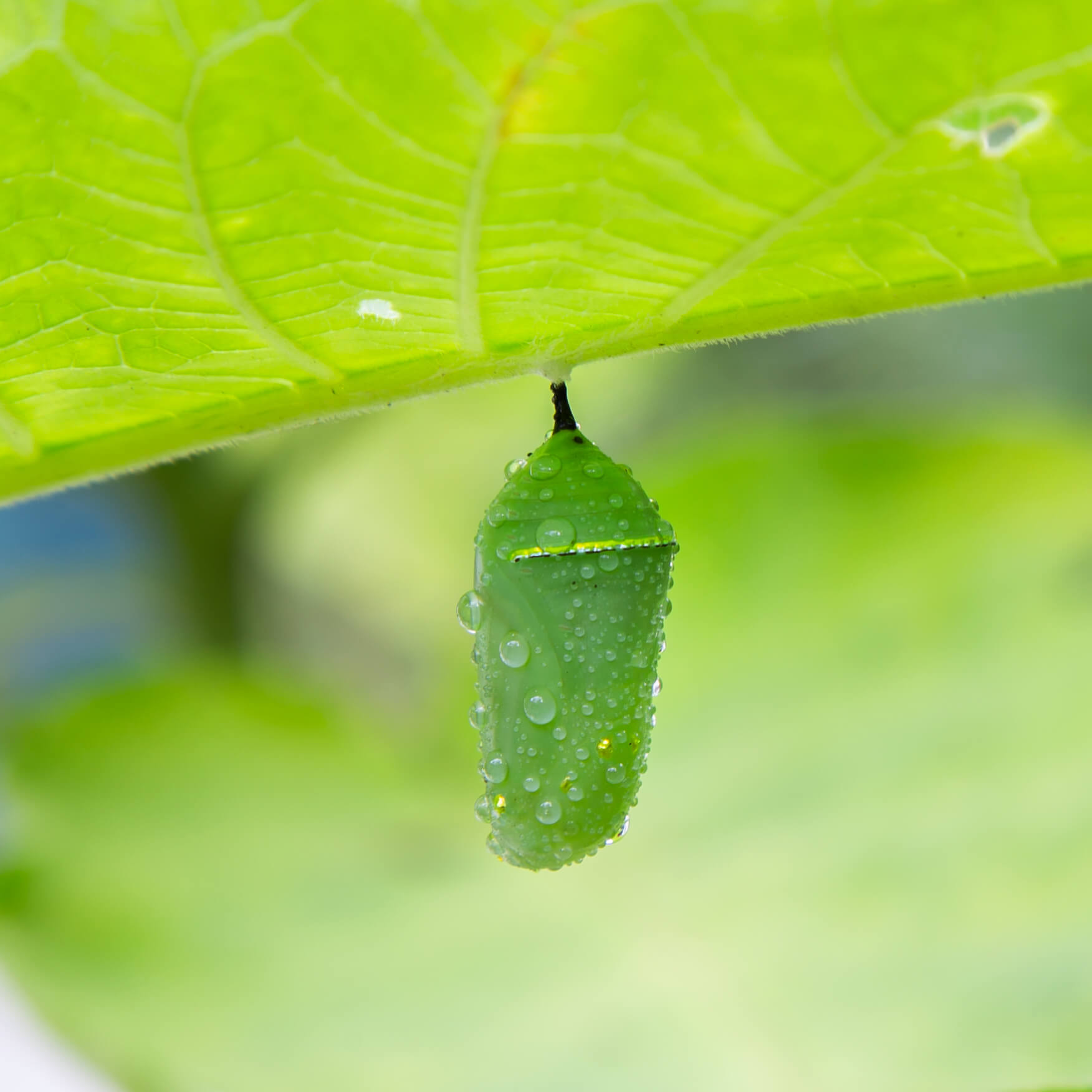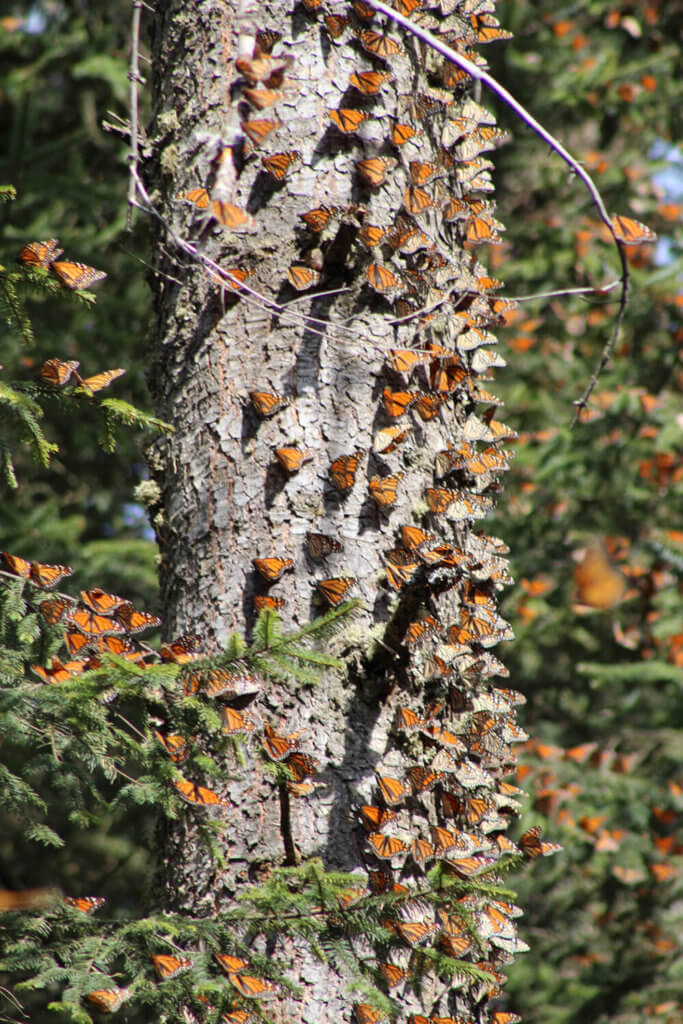Championing Monarch Conservation for Future Generations
The monarch butterfly has one of, if not the, most complex migrations of any insect. Monarchs travel thousands of miles every year across North America and have become a symbol for countless communities. From being the state insect of six U.S. states, the symbol of the state of Michoacán, and the classroom favorite of elementary schools across the U.S., Mexico, and Canada, the monarch is one famous insect. That is why monarch conservation is a crucial part of our mission at Forests for Monarchs.

LIFE CYCLE OF THE MONARCH BUTTERFLY
- Monarchs lay their eggs on milkweed and start as small as a needlepoint. It usually takes around 22-37 days for a monarch butterfly to go from egg to adult with temperatures around 70-80 degrees Fahrenheit. The egg stage lasts 3-5 days, and adult monarchs will lay around 200 eggs -- ONLY on milkweed.
- The monarch then enters the larva stage, which lasts 11-18 days. It starts really small before growing into the famous familiar white, yellow, and black-striped caterpillar. In this stage, milkweed is again crucial, as it's the only food source for a monarch caterpillar.
- When ready, the caterpillar creates the familiar chrysalis (on milkweed) and stays there for 8-14 days. The chrysalis turns from green to black with a gold stripe. Once it turns black, that's a sign the monarch will soon be ready to emerge.
- Once it emerges, the monarch butterfly usually takes some time before leaving. It's important to have nectar-producing plants that allow the butterfly to feed.
The monarchs we see in Mexico each fall and winter travel thousands of miles from Canada and the United States. Having never made this migration, monarchs are evolutionarily programmed to travel back to the same exact forest every year. As March approaches, this “Super Generation” picks up activity and begins the mating process. Soon after, they begin their journey north to the Mexico/Texas border, where they will lay their eggs and die. Those eggs then become a new generation, and it will take another two to four generations to reach Canada and the northern U.S. states each summer.
At one time, the monarch overwintering habitat in Mexico encompassed over 50 acres with a population of over one billion. Due to habitat loss and other factors threatening the monarch population, the overwintering colonies have dwindled to as little as 5 acres during some recent years.
In July 2022, The International Union for Conservation of Nature (IUCN) made a significant decision to list the iconic Monarch butterfly as an endangered species. This move underscores the critical state of this beloved insect and the urgent need for conservation efforts.
Today, the relict natural forests that the monarchs depend on constantly face pressure ranging from storms to clearcutting. In order to maintain the current population size, what is left of the natural forests must stay protected.
That is why Forests for Monarchs is working with communities and landowners to convert their cleared and degraded land back to forested land. Reforesting in and around the Monarch Butterfly Biosphere Reserve area is crucial for the long-term survival of the monarch butterfly.

STAY INFORMED
To receive the most up-to-date information on monarch conservation efforts, the state of the monarch population, and what is being done to help, sign up for our e-newsletter: SIGN UP HERE. Visit our blog, The Pollinator Chronicles, for more information on the monarch butterfly.
Other great monarch conservation resources:
